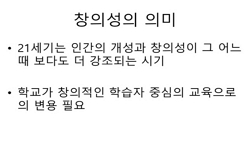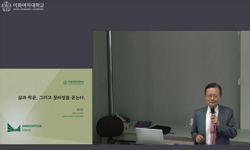Building activity models using traditional games for early childhood creativity development is considered to be largely effective to the usage of traditional games in educational purposes. Therefore, this research analyzes the meaning and the challeng...
http://chineseinput.net/에서 pinyin(병음)방식으로 중국어를 변환할 수 있습니다.
변환된 중국어를 복사하여 사용하시면 됩니다.
- 中文 을 입력하시려면 zhongwen을 입력하시고 space를누르시면됩니다.
- 北京 을 입력하시려면 beijing을 입력하시고 space를 누르시면 됩니다.

유아 창의성 계발을 위한 전통놀이 활동 모형 = Traditional Game Activity Model for Early Childhood Creativity Development
한글로보기https://www.riss.kr/link?id=A82604557
- 저자
- 발행기관
- 학술지명
- 권호사항
-
발행연도
2010
-
작성언어
-
-
주제어
창의성 ; 전통놀이 ; 상황제시 ; 질문하기 ; 정보탐색하기 ; 상상하기 ; 준비하기 ; 놀이하기 ; 칭찬하기 ; creativity ; traditional game ; situation suggestion ; questioning ; research ; imagining ; preparation ; play ; complimenting
-
KDC
900
-
등재정보
KCI등재
-
자료형태
학술저널
-
수록면
125-163(39쪽)
- DOI식별코드
- 제공처
-
0
상세조회 -
0
다운로드
부가정보
다국어 초록 (Multilingual Abstract)

Building activity models using traditional games for early childhood creativity development is considered to be largely effective to the usage of traditional games in educational purposes. Therefore, this research analyzes the meaning and the challenges of creativity, and takes a step further from simple game activities to traditional game activity models for early childhood creativity development by analyzing the necessity of such activities. The traditional game activity models are as follows: First, The activity model consists of seven steps: a situation suggestion, a questioning, a research, an imagining, a preparation, a play, and a complimenting. Second, in a situation suggestion step, we start by showing the children clips and photos relative to the traditional activity to draw their attention, and continue educating them with relative information. Third, in a questioning step, we lead them to ask questions from the clips and photos they have seen from the previous step. Fourth, in research step, we lead them to answer the questions from the previous step by giving them more information. If necessary, continue the research by consulting professionals, books, internet, or nature. Fifth, in an imagining step, build an information grid based on the input from the previous step by seeking the relationships between them. Sixth, in a preparation step, collect and build equipments needed for the traditional game activity. Seventh, in a play step, execute the play as imagined and prepared in previous steps. Eighth, in a complimenting step, discuss the whole process and express what each child have perceived through the activity and give a compliment to each other. This Model gives an overall structure and some of the steps can be extended or omitted depending on the given time. However, the preparation and playing step cannot be omitted, as they are the execution of the traditional activities themselves. When any other steps are omitted, it is recommended that the teacher should give an explanation relative to the step.
동일학술지(권/호) 다른 논문
-
- 동아대학교 석당학술원
- 한정호 ( Joung Ho Han )
- 2010
- KCI등재
-
- 동아대학교 석당학술원
- 최은령 ( Eun Ryung Choi )
- 2010
- KCI등재
-
중등학교 말하기 교육의 내용 체계 연구 -2007년 개정 교육과정을 중심으로
- 동아대학교 석당학술원
- 김영선 ( Young Seon Kim )
- 2010
- KCI등재
-
- 동아대학교 석당학술원
- 정은우 ( Eun Woo Jeong )
- 2010
- KCI등재




 KCI
KCI KISS
KISS






